Abstract
We prove that, at the frequencies generally proposed for extracranial stimulation of the brain, it is not possible, using any superposition of external current sources, to produce a three-dimensional local maximum of the electric field strength inside the brain. The maximum always occurs on a boundary where the conductivity jumps in value. Nevertheless, it may be possible to achieve greater two-dimensional focusing and shaping of the electric field than is currently available. Towards this goal we have used the reciprocity theorem to present a uniform treatment of the electric field inside a conducting medium produced by a variety of sources: an external magnetic dipole (current loop), an external electric dipole (linear antenna), and surface and depth electrodes. This formulation makes use of the lead fields from magneto- and electroencephalography. For the special case of a system with spherically symmetric conductivity, we derive a simple analytic formula for the electric field due to an external magnetic dipole. This formula is independent of the conductivity profile and therefore embraces spherical models with any number of shells. This explains the "insensitivity" to the skull's conductivity that has been described in numerical studies. We also present analytic formulas for the electric field due to an electric dipole, and also surface and depth electrodes, for the case of a sphere of constant conductivity.
Full text
PDF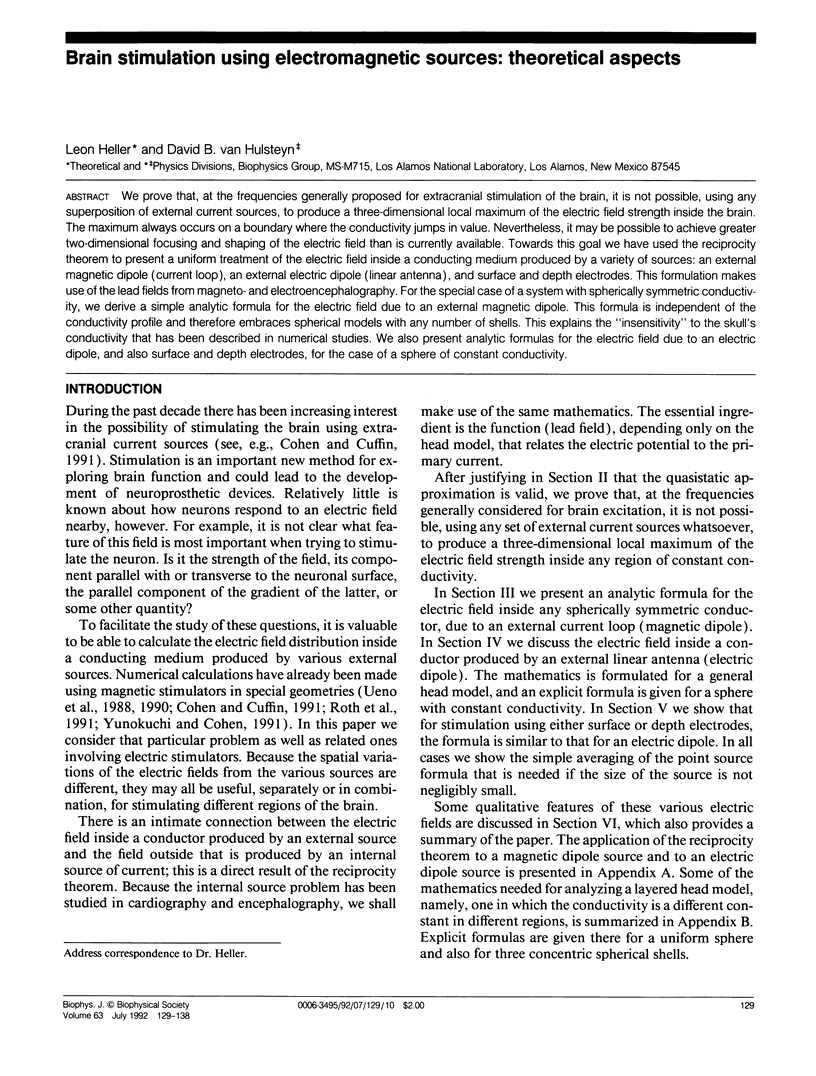
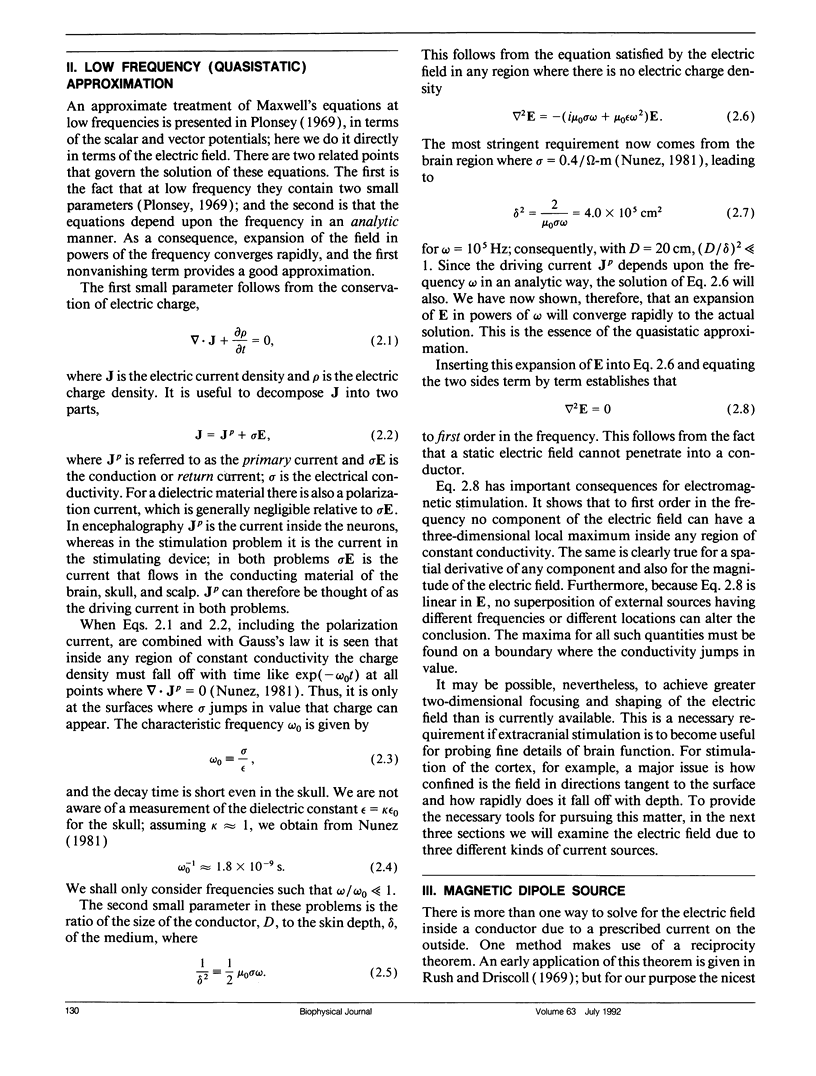
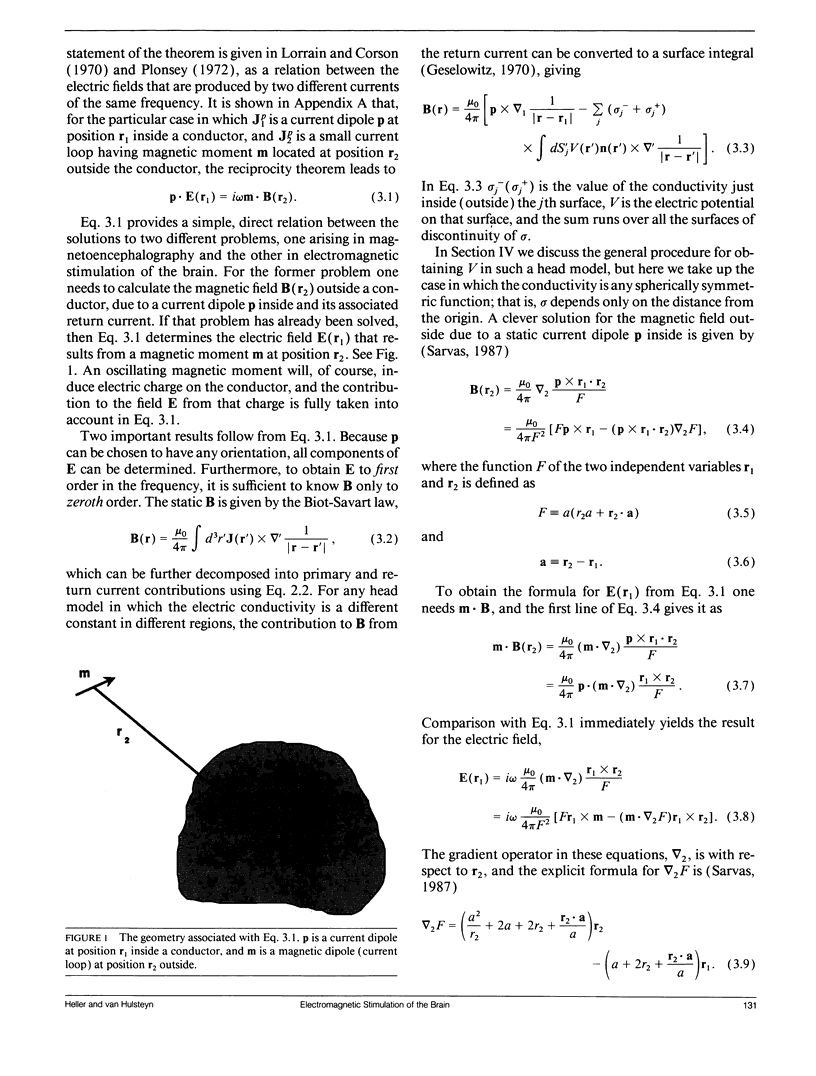
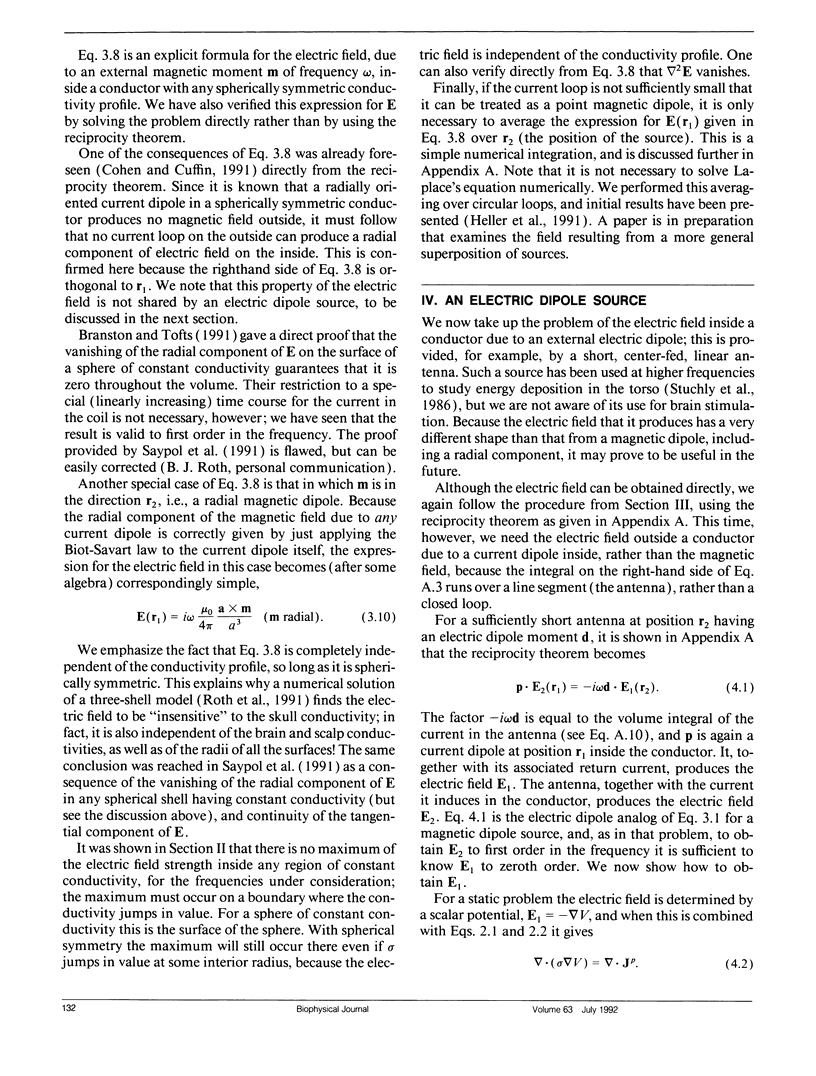
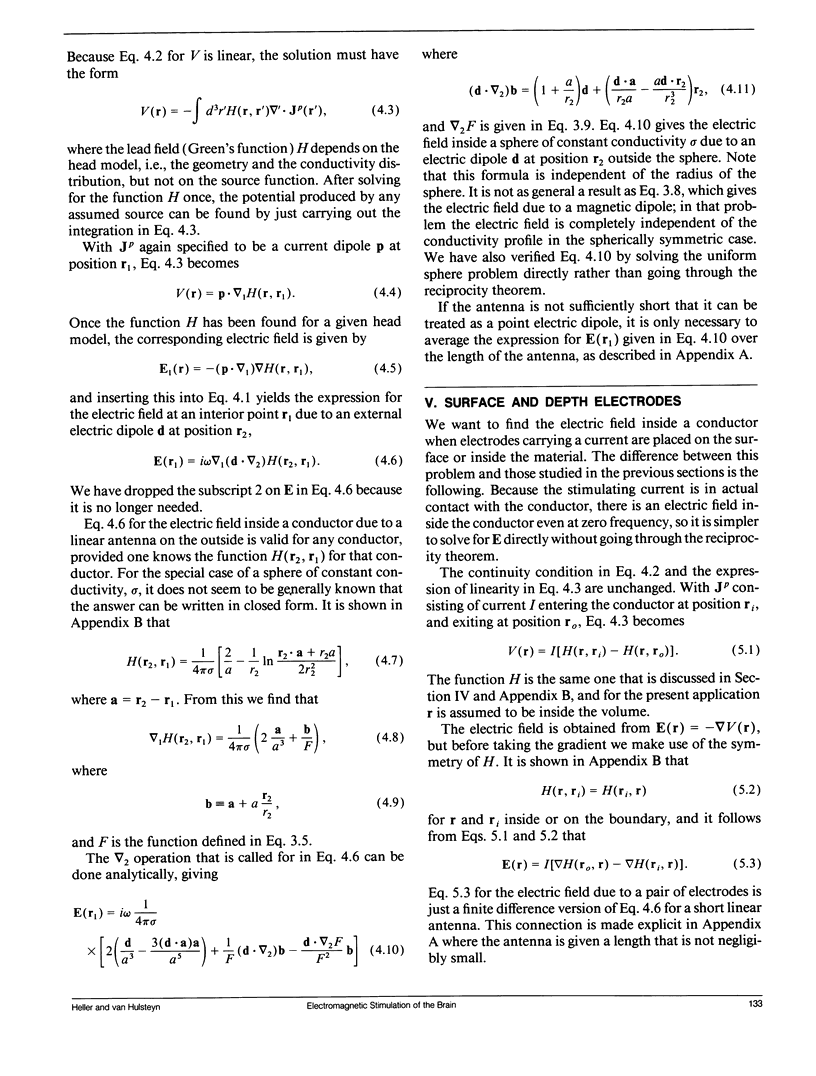

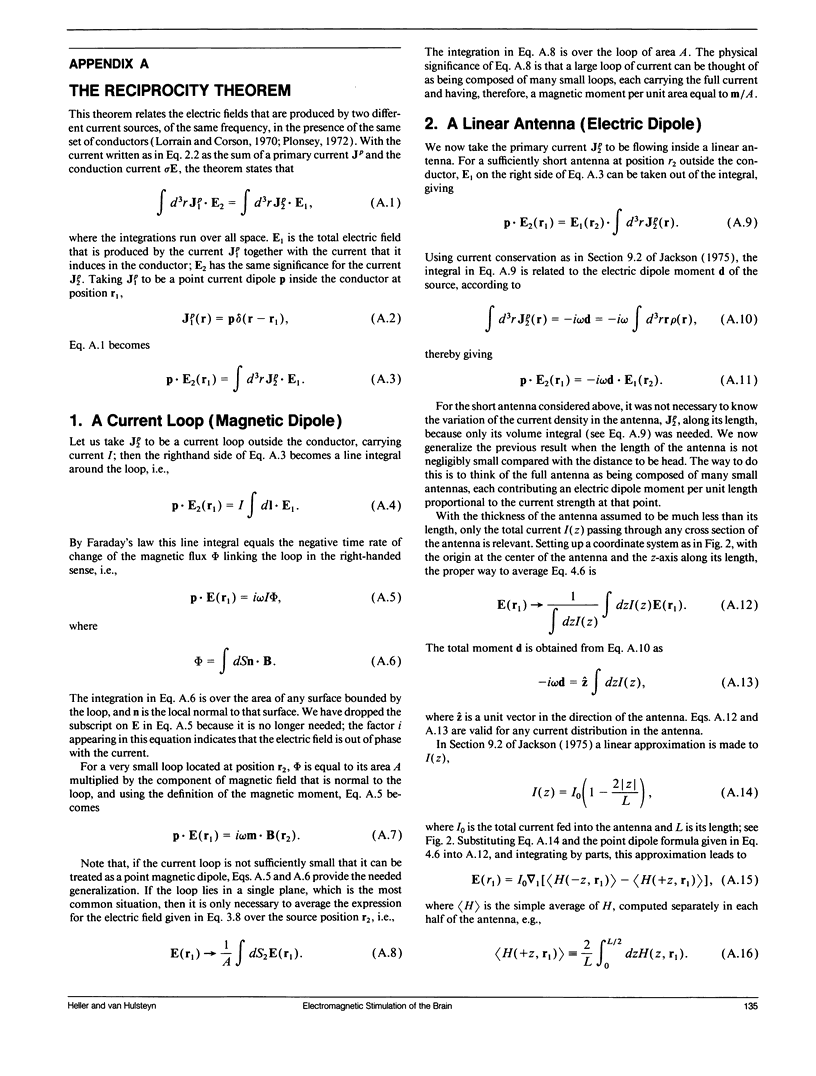
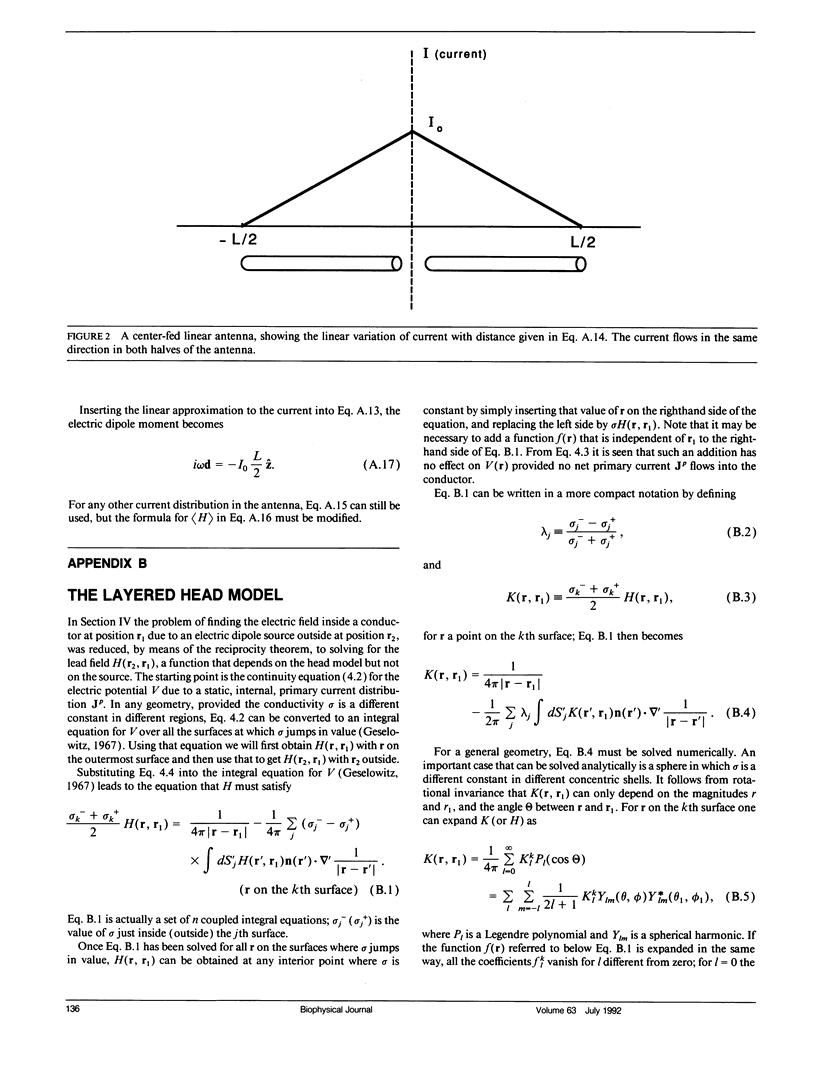

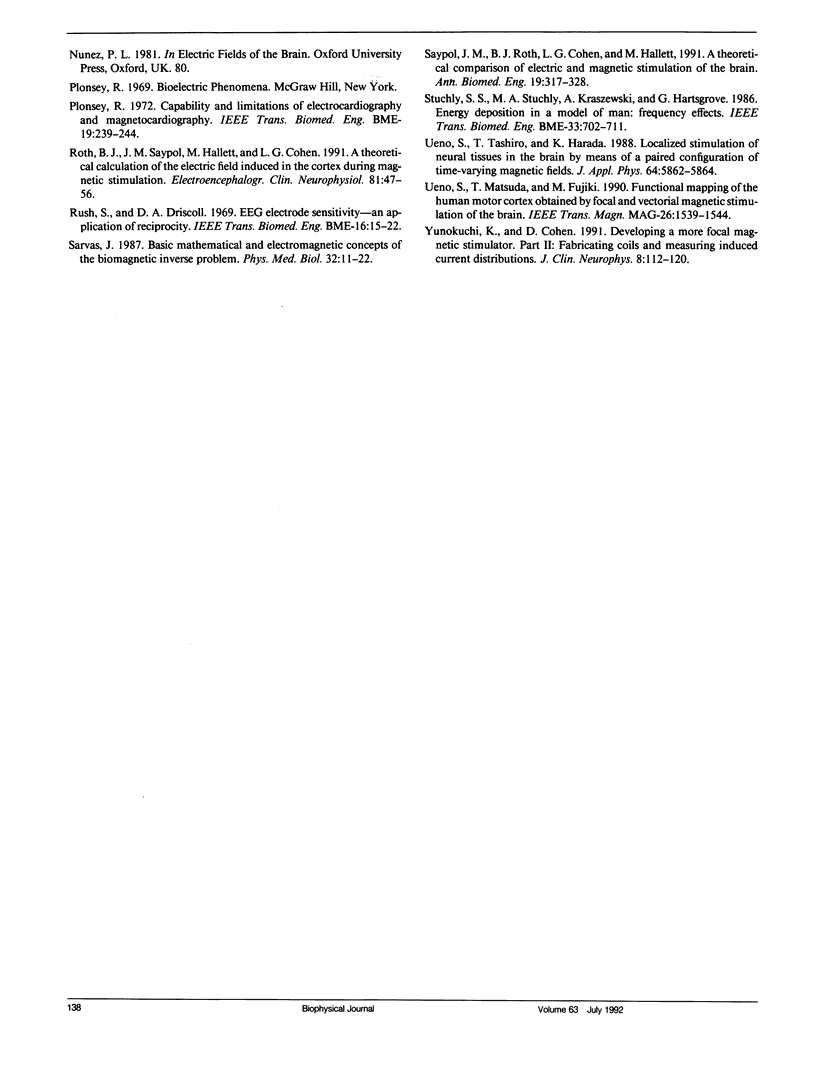
Selected References
These references are in PubMed. This may not be the complete list of references from this article.
- Cohen D., Cuffin B. N. Developing a more focal magnetic stimulator. Part I: Some basic principles. J Clin Neurophysiol. 1991 Jan;8(1):102–111. doi: 10.1097/00004691-199101000-00013. [DOI] [PubMed] [Google Scholar]
- Geselowitz D. B. On bioelectric potentials in an inhomogeneous volume conductor. Biophys J. 2008 Dec 31;7(1):1–11. doi: 10.1016/S0006-3495(67)86571-8. [DOI] [PMC free article] [PubMed] [Google Scholar]
- Plonsey R. Capability and limitations of electrocardiography and magnetocardiography. IEEE Trans Biomed Eng. 1972 May;19(3):239–244. doi: 10.1109/TBME.1972.324123. [DOI] [PubMed] [Google Scholar]
- Roth B. J., Saypol J. M., Hallett M., Cohen L. G. A theoretical calculation of the electric field induced in the cortex during magnetic stimulation. Electroencephalogr Clin Neurophysiol. 1991 Feb;81(1):47–56. doi: 10.1016/0168-5597(91)90103-5. [DOI] [PubMed] [Google Scholar]
- Rush S., Driscoll D. A. EEG electrode sensitivity--an application of reciprocity. IEEE Trans Biomed Eng. 1969 Jan;16(1):15–22. doi: 10.1109/tbme.1969.4502598. [DOI] [PubMed] [Google Scholar]
- Sarvas J. Basic mathematical and electromagnetic concepts of the biomagnetic inverse problem. Phys Med Biol. 1987 Jan;32(1):11–22. doi: 10.1088/0031-9155/32/1/004. [DOI] [PubMed] [Google Scholar]
- Saypol J. M., Roth B. J., Cohen L. G., Hallett M. A theoretical comparison of electric and magnetic stimulation of the brain. Ann Biomed Eng. 1991;19(3):317–328. doi: 10.1007/BF02584306. [DOI] [PubMed] [Google Scholar]
- Stuchly S. S., Stuchly M. A., Kraszewski A., Hartsgrove G. Energy deposition in a model of man: frequency effects. IEEE Trans Biomed Eng. 1986 Jul;33(7):702–711. doi: 10.1109/TBME.1986.325761. [DOI] [PubMed] [Google Scholar]
- Yunokuchi K., Cohen D. Developing a more focal magnetic stimulator. Part II: Fabricating coils and measuring induced current distributions. J Clin Neurophysiol. 1991 Jan;8(1):112–120. [PubMed] [Google Scholar]


